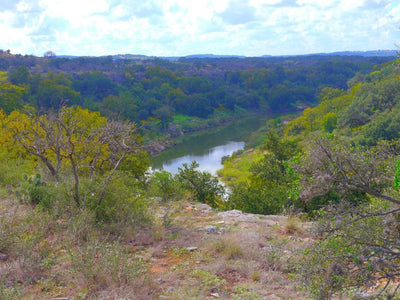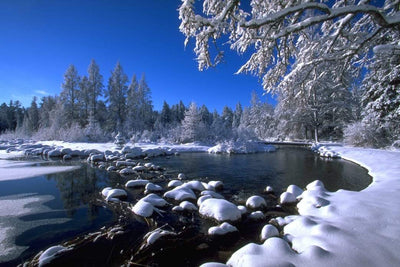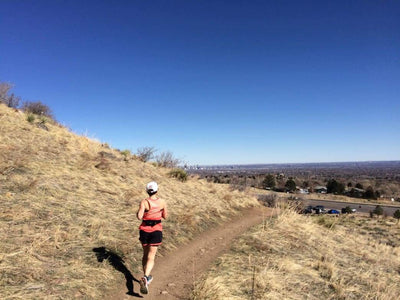10 Tips for Winter Camping in Colorado
There’s no need to wait until warm weather to snooze under the stars. Winter camping in Colorado is a magical experience. The summer crowds are gone, a gentle quiet washes over the woods, and you don’t need to venture far to feel like you’re in the middle of nowhere. If you’re keen to give winter camping a try, follow these tips to make the most of a snowy night out.
1. Start easy.

If you’re new to winter camping, ease yourself into the experience by picking a spot that’s not too far from your car. U.S. Forest Service land west of Boulder has some pretty choice spots. For the inside scoop, check out our recommendations for five places to try winter camping near Boulder .
You might also get giddy checking out the range of options at Colorado's state parks. Thirty of them offer winter camping, ranging from cushy campsites to blissful backcountry spots. A developed campground (with a convenient bathroom) can make your first winter overnight less daunting. State Forest, Golden Gate Canyon, and Ridgway state parks even offer cabins and yurts for newbies who want some sort of roof over their heads.
2. Plan for safety.
Proper preparation is key when heading into the winter wilds. Agree on a plan with your partner, check the weather forecast, and tell someone where you’re going and when you expect to return.
To ensure you get home safely, dot your i’s and cross your t’s. Study your route carefully, bring a map and compass, and note landmarks along the way. Don’t count on following your footsteps; a surprise storm could erase them without a trace. Also carry some way to communicate with the outside world. A DeLorme InReach satellite communicator is a great choice and can help you navigate.
Last but not least, if your route crosses avalanche terrain, take a course in snow safety and carry avalanche gear.
3. Gear up.
Winter shrinks the margin of error, so go ahead and geek out on gear. Suck up the extra weight and pack a four-season tent to protect against whatever old man winter throws your way. For cooking, liquid fuel stoves trump canister stoves in the cold. Carry extra fuel. And keep in mind that cold saps power from batteries, so bring extras and store them in a warm spot, like in your sleeping bag. Lithium batteries cope with the cold better than alkaline ones.
If carrying extra cold-weather gear weighs down your pack, considering hauling all of your stuff in a sled instead.
4. Dress the part.
Layering is key to being able to control your temperature and avoid catching a chill. Start with a wool or synthetic base layer that wicks moisture away from your skin. On top of that, you’ll need a mid-weight layer, a down sweater, and a waterproof layer at the very least. Bring more clothing than you think you might need. A warm hat and gloves are essential, of course. Always pack extra socks and gloves in case your first pair gets wet.
Overheating is also a concern since sweat robs your body of warmth. While you’re walking (or skiing or snowshoeing) to your site, whittle down your layers so you don’t overheat. Unzip or strip down the minute you start feeling hot. As soon as you get to your campsite, put on warm clothes to trap all the body heat you generated en route.
5. Protect your feet.
Wet boots can freeze. Dry, toasty feet are happy feet. For best results, wear two layers of socks in warm, waterproof boots. Make sure those extra socks don’t make your boots too tight. For extra credit, use vapor barrier socks next to your skin. (Plastic bags can achieve the same effect in a pinch.) Strap on gaiters to keep out snow.
Bonus tip: Pull out your boot liners and snooze with them in your sleeping bag overnight. Or, if you have a roomy sleeping bag, put your boots in the stuff sack for your sleeping bag or tent and keep them at the foot of your bag.
6. Prepare your tent space.

Pick a campsite that’s sheltered from the wind. If you’re camping on snow, pack it down into a flat platform (erring on the large side) before pitching your tent. Stake down your shelter securely to prevent having to go out in the cold to fix it if wind whips up in the middle of the night. Winter snow stakes are a great option, especially when buried in a deadman (horizontal) position in the snow.
7. Stay toasty in your sleep.
Staying warm is critical to getting a good night’s rest. Use a sleeping bag that’s rated for temperatures lower than forecast. Add a sleeping bag liner for extra warmth. Underneath your bag, use two sleeping pads, including at least one foam pad. (Go with one that has a high R rating for maximum insulation.) To pre-warm your nest, fill a water bottle with hot water and stuff it into your bag. Just be sure the lid is screwed on tight. Wearing a hat and a soft, non-restrictive neck gaiter keep a lot of heat from escaping from your head.
8. Fuel up.

Your body burns extra calories in the cold, so bring plenty of food. Cook in a protected area away from the wind, like a snow trench or your tent’s vestibule. Fill a thermos with hot soup or tea to sip while you cook.
When it comes to water, don’t let the saying “pure as driven snow” mislead you. Boil or treat melted snow before you drink it. Hydrate frequently since colder temperatures keep thirst at bay even when you’re body needs fluids. Store water bottles upside down to keep the threads from freezing.
If you’re feeling festive, craft an ice bar out of the snow, with slotted holes to store spirits.
9. Pee in a bottle.
Yep, that’s right. To save yourself from a chilly bathroom run in the middle of the night, pee in a bottle in your tent. Ladies, you can do this, too, with a little practice. A nifty device called a Shewee lets you relieve yourself without even getting undressed. Boys and girls, whatever you do, mark your pee bottle clearly so you don’t swig from it by accident (some people buy yellow bottles for this purpose). That could put a damper on your winter camping enthusiasm.
10. Keep a warm, fuzzy attitude.
A positive mindset will help you go with the flow and keep cold thoughts from creeping into your head. Take it from Eric Larsen, a polar explorer who has skied to the North Pole three times and knows a thing or two about staying warm: “When you think you’re going to be cold, you’re going to be cold. Understanding that you can be warm no matter what the conditions are is a huge thing.”
If you get cold, put on more clothes and do something to stoke your inner furnace, like jumping jacks, chopping wood, or taking a brisk walk through the woods.
Most importantly, embrace the spirit of adventure and have fun.
Written by Avery Stonich for RootsRated.




